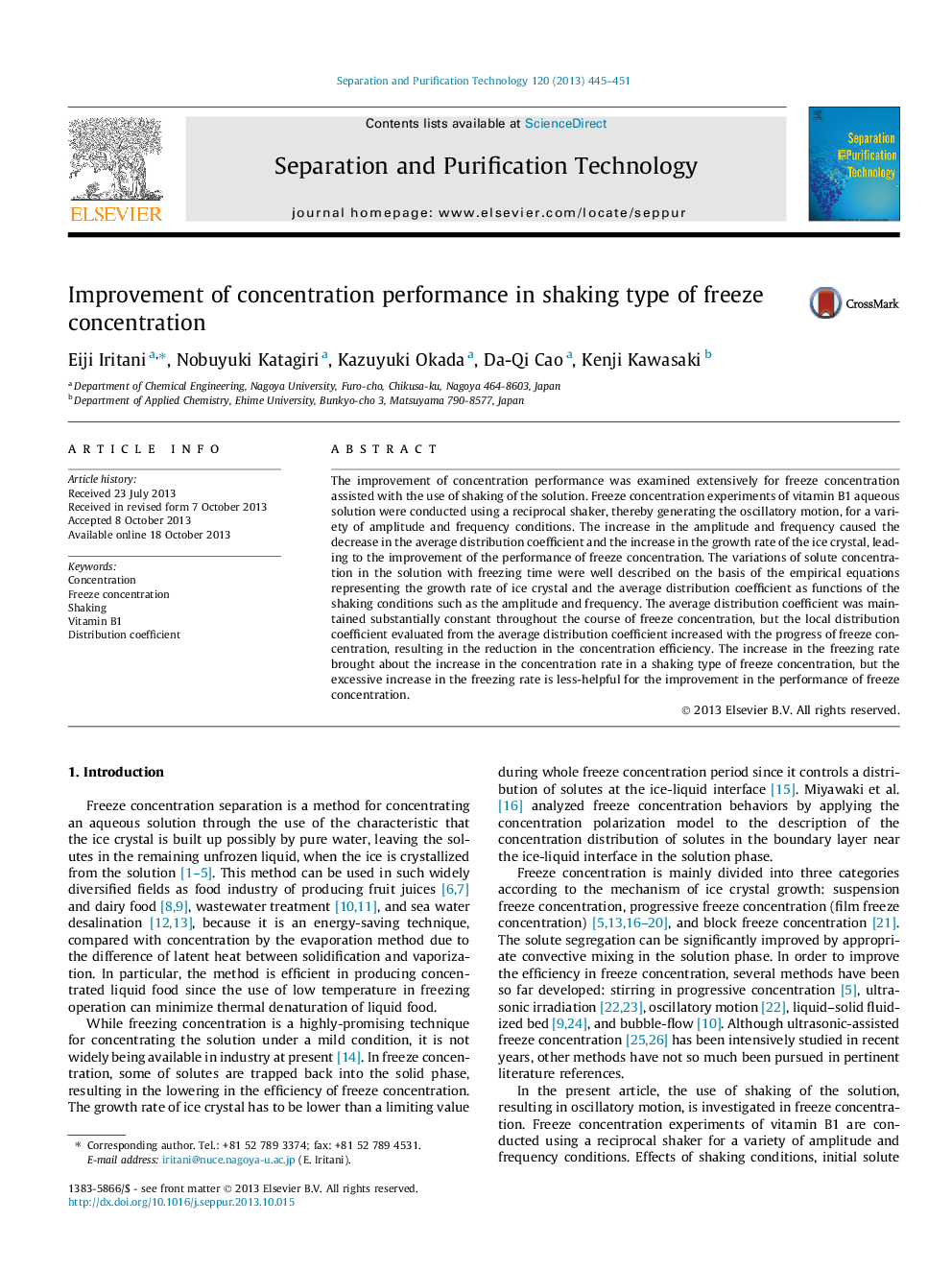| Article ID | Journal | Published Year | Pages | File Type |
|---|---|---|---|---|
| 641299 | Separation and Purification Technology | 2013 | 7 Pages |
Abstract
The improvement of concentration performance was examined extensively for freeze concentration assisted with the use of shaking of the solution. Freeze concentration experiments of vitamin B1 aqueous solution were conducted using a reciprocal shaker, thereby generating the oscillatory motion, for a variety of amplitude and frequency conditions. The increase in the amplitude and frequency caused the decrease in the average distribution coefficient and the increase in the growth rate of the ice crystal, leading to the improvement of the performance of freeze concentration. The variations of solute concentration in the solution with freezing time were well described on the basis of the empirical equations representing the growth rate of ice crystal and the average distribution coefficient as functions of the shaking conditions such as the amplitude and frequency. The average distribution coefficient was maintained substantially constant throughout the course of freeze concentration, but the local distribution coefficient evaluated from the average distribution coefficient increased with the progress of freeze concentration, resulting in the reduction in the concentration efficiency. The increase in the freezing rate brought about the increase in the concentration rate in a shaking type of freeze concentration, but the excessive increase in the freezing rate is less-helpful for the improvement in the performance of freeze concentration.
Related Topics
Physical Sciences and Engineering
Chemical Engineering
Filtration and Separation
Authors
Eiji Iritani, Nobuyuki Katagiri, Kazuyuki Okada, Da-Qi Cao, Kenji Kawasaki,
